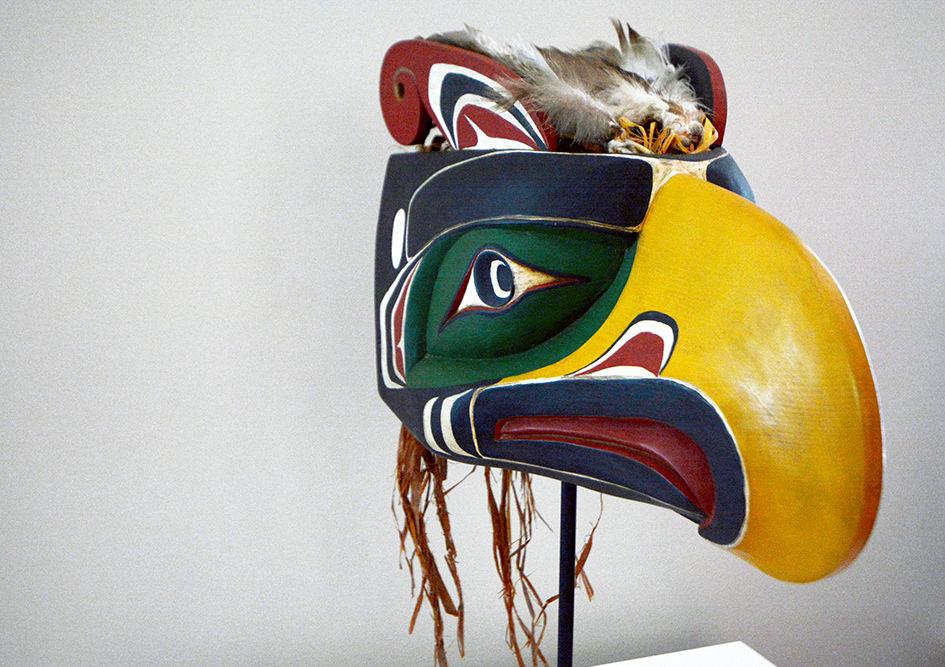NC State University’s Gregg Museum will host its reopening after a two-year period of relocation and renovation on Saturday from 10 a.m. to 3 p.m., at the Historic Chancellor’s Residence on Hillsborough Street.
With free admission, NC State students, faculty and those in the surrounding community are encouraged to experience the museum’s permanent collection and exhibitions for the first time since 2013. Opening day events include a ribbon-cutting ceremony, exhibition viewings, family friendly activities, artist demonstrations, tours, performances and gift bags.
Mark Tulbert, director of arts marketing at Arts NC State, is eager for the museum’s opening.
“It’s here in a much more visible space, we’re in sight of the Belltower,” Tulbert said. “It’s going to be open year-round, it’s accessible, there’s going to be wonderful programming inside and out.”
The Gregg Museum will be unveiling three exhibitions in its new galleries. “Show & Tell” presents a variety of objects from the 35,000 piece permanent collection ─ “From disguised war maps and iconic industrial designs to New Guinea body masks, even long-term fans of the Gregg will discover plenty of surprises among the objects on view.”
Visitors will also be able to explore “Treasures of Native America,” a recent addition to the permanent collection, by looking through the visitor observation drawers and displays, which feature artifacts of Native American tribes and communities.
A final exhibition during the grand reopening is North Carolinian and contemporary artist Herb Jackson’s “A Door is not a Window.” With special lighting funded by Wells Fargo, Jackson’s abstract paintings are brought to life and engage their audience through interpretation and aesthetic glimmer.
As one of six programs of Arts NC State within the Division of Academic and Student Affairs, Gregg Museum holds the largest and most diverse collection of art and artifacts of any university museum in the state. The museum seeks to use these collections as means of “teaching and inspiration for students and faculty,” per a press release from Arts NC State.
With 98 percent of objects being donated, Gregg Museum Director Roger Manley says that in a way, “the art is a democratic reflection of what people think is valuable.”
The Gregg Museum’s new location and its resources allow for a greater immersion into NC State’s art and design community. Those seeking involvement with the museum can look forward to an internship program for class credit, which Manley says will be opening in spring 2018.
“Future interns can expect to encounter a variety of tasks museum faculty carry out,” Manley said. “Whether they are cataloging pictures, constructing mounts for artifacts or preparing exhibits, interning at the museum is a great way to get your foot in the door if you want a museum career.”
The concept of the Gregg Museum began decades ago when NC State sought to acquire art to reflect the university’s curriculum. The endeavor started as the Visual Arts Program in the late 1970s, but with the opening of an addition to Talley Student Union in 1992, developed into the Visual Arts Center — designed to showcase up to 5,000 pieces of work.
Seven years ago, Manley was told that the museum was to move to a different location. In 2011, it was determined that the Gregg Museum would relocate from Talley Student Union to the historic, Georgian-style chancellor’s residence built in 1928, upon a new chancellor’s occupancy opening on NC State’s Centennial Campus.
In 2015, lead architect Kenneth Luker of Perkins+Will began a $9.5 million project, $4 million of which was privately fundraised, to renovate the chancellor’s residence’s east end and transform the historic grounds into a partially modern “gathering and learning space.”
In addition to landscape architects of Surface 678, NC State Horticulture students, in collaboration with the TH!NK program and funded by Bayer CropScience, were able to design and create the Gregg Museum’s pollinator garden from start to finish.
Hilary Kinlaw, museum operations manager, encourages NC State students and faculty to experience the property, even if the content of the museum doesn’t necessarily interest them.
“You have the front lawn, the back, peaceful places students could take advantage of as a retreat between classes,” Kinlaw said. “Students are encouraged to use the area as a hangout space.”
An outdoor sculpture garden and other outside pieces and furniture are expected in the future.
Gregg Museum members, known as Friends of the Gregg, are the backbone of funding for Gregg Museum sponsorships, including student scholarships, banquets and other programs.
Mona Fitzpatrick, assistant director of development, is starting Friends of the Gregg for the new museum.
“We are excited to launch the new Friends of the Gregg membership program to allow visitors the opportunity to experience the museum more deeply while supporting the future of our free access cultural landmark,” Fitzpatrick said. “Students can sign up for a free membership at the museum or online.”
The Gregg Musuem has a full calendar for its fall season, with shows including the Industrial Design Show and Tell, Ceramic Show and Tell, Yoga in the Garden and more.








